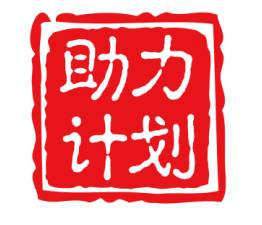 "Mass entrepreneurship and innovation" has become one of the most frequently used buzzwords over the past few months. On March 8, 2015, in a government work report Premier Li Keqiang emphasized the creation of dual engines of mass entrepreneurship and innovation, and increasing public goods and public services.
"Mass entrepreneurship and innovation" has become one of the most frequently used buzzwords over the past few months. On March 8, 2015, in a government work report Premier Li Keqiang emphasized the creation of dual engines of mass entrepreneurship and innovation, and increasing public goods and public services.
"Mass entrepreneurship and innovation" was specifically defined as a new engine of economic growth, which has sparked an upsurge of support and participation in innovation and entrepreneurship. In a video conference on June 2, Mr. Yuan Guiren, Minister of Education, stated that deepening the reform of entrepreneurship and innovation education in colleges and universities is an important part of pushing forward the comprehensive reform of higher education now and in the future.
 In order to meet the needs of the country's economic and social development, the escalation and adjustment of the economic structure, and the need for lifelong learning, the Open University of China(OUC) is committed to training vocational and application oriented workers; satisfying the needs of society, employers, and students; and achieving the goal of cultivating high quality skilled personnel according to the rules of distance education. At present, the university has two "engines" that are driving innovation and entrepreneurship.
In order to meet the needs of the country's economic and social development, the escalation and adjustment of the economic structure, and the need for lifelong learning, the Open University of China(OUC) is committed to training vocational and application oriented workers; satisfying the needs of society, employers, and students; and achieving the goal of cultivating high quality skilled personnel according to the rules of distance education. At present, the university has two "engines" that are driving innovation and entrepreneurship.
Engine One: Assistance Plan for New Industrial Worker Training and Development with the Aim of Fostering Employees’Innovation Ability
 In order to explore a new model to train new industrial workers based on the lifelong learning concept; build a modern system of education services; provide services for industrial transformation and upgrading; and help employees grow and develop, the OUC cooperated with Guangdong Provincial Federation of Trade Unions and launched the Assistance Plan for New Industrial Worker Training and Development (shortened to Assistance Plan).
In order to explore a new model to train new industrial workers based on the lifelong learning concept; build a modern system of education services; provide services for industrial transformation and upgrading; and help employees grow and develop, the OUC cooperated with Guangdong Provincial Federation of Trade Unions and launched the Assistance Plan for New Industrial Worker Training and Development (shortened to Assistance Plan).
The main content of the Assistance Plan includes offering on-the-job vocational qualification certificate training and on-the-job training for enterprises, and providing curriculum and learning resources, especially digital learning support services. The degree education included in the Assistance Plan mainly focuses on the modern manufacturing and production services industry. It currently offers higher vocational education majors at junior college level stage.
The "part-time, on-the-job, affordable, in-house, mobile" service model created in the Assistance Plan, and the organizational model of "sending subsidies, services, and content" keep the education grounded and provide a strong guarantee for training highly skilled personnel. In the process of the implementation of the Assistance Plan, relying on its Guangzhou Branch and the Guangzhou Experimental School, the OUC actively explored the integration of degree and non-degree continuing education and the connection of modern professional education, open education,and continuing education, pushed the rapid combination of education with the Internet, and pioneered a new staff cultivation model integrating industry and education, with good results.
Engine Two: The Ministry of Education (MOE) "One College Student per Village " programme inspires farmers' entrepreneurial zeal

The problems of agriculture and rural development and the farmers have always been a top priority in the process of socialist modernization. In February 2004, the MOE proposed in its 2003-2007 Education Revitalizing Action Plan that the focus should be on “rural education development and reform". In the same month, the MOE announced at a press conference the implementation of the “One College Student per Village” programme by China Central Radio and TV University (CCRTVU), with enrollment starting in fall 2004.The implementation of the programme was aimed at serving the construction of a socialist countryside, providing real value-creating education, and creating value for the countryside, agriculture, and farmers.
As a successful example of higher education in the countryside, the OUC has explored a method of modern distance higher education supported by information technology. In the 10 years since its official launch, it has cultivated a large number of new professional farmers that have grasped new knowledge, farming technologies, and management skills for the construction of a new socialist countryside.
The programme was designed to use modern distance education to send higher education to the countryside and serve the construction of a new socialist countryside and the development of modern agriculture. It highlights the characteristics of higher vocational education and trains local able persons who will "stay in rural areas and dedicate themselves to agriculture". As of fall 2014, a total of 17 majors in five categories have been developed to meet the needs of rural development. 42 branches (open universities) and 1,379 teaching sites have participated in the pilot programme, with a cumulative enrollment of nearly 480,000 people.
 WeChat Account of the OUC’s News Centre “Voice of the OUC”
WeChat Account of the OUC’s News Centre “Voice of the OUC”
By Yu Minsheng, OUC